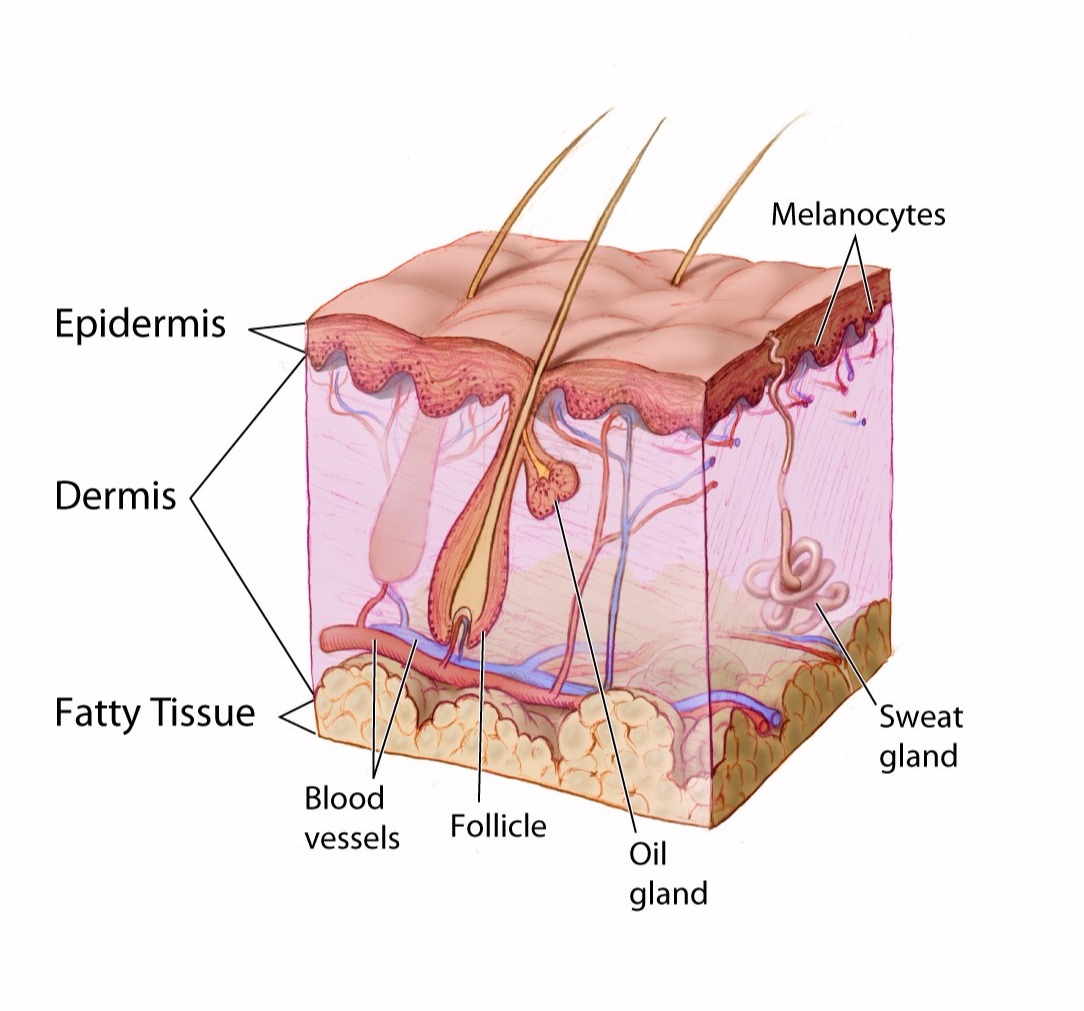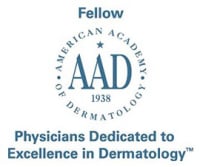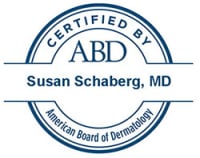There are three layers to the skin:
- Epidermis. This is the outer most layer that sloughs off dead skin cells and acts as a protective barrier against foreign bodies, infections and the sun. The epidermis also contains the cells (melanocytes), which are responsible for skin pigmentation.
- Dermis. The middle layer of skin, the dermis houses hair follicles, sebaceous (oil) glands, sweat glands, capillaries (small blood vessels) and lymph vessels. It is held together by a protein called collagen. Sweat glands are part of the body's cooling system. The dermis also contains touch and pain receptors.
- Subcutaneous. This is the deepest layer of skin containing larger blood vessels and nerves. It is made up of a network of collagen and fat cells and plays an important role in the manufacture of Vitamin D, protecting against injury and conserving body heat.



